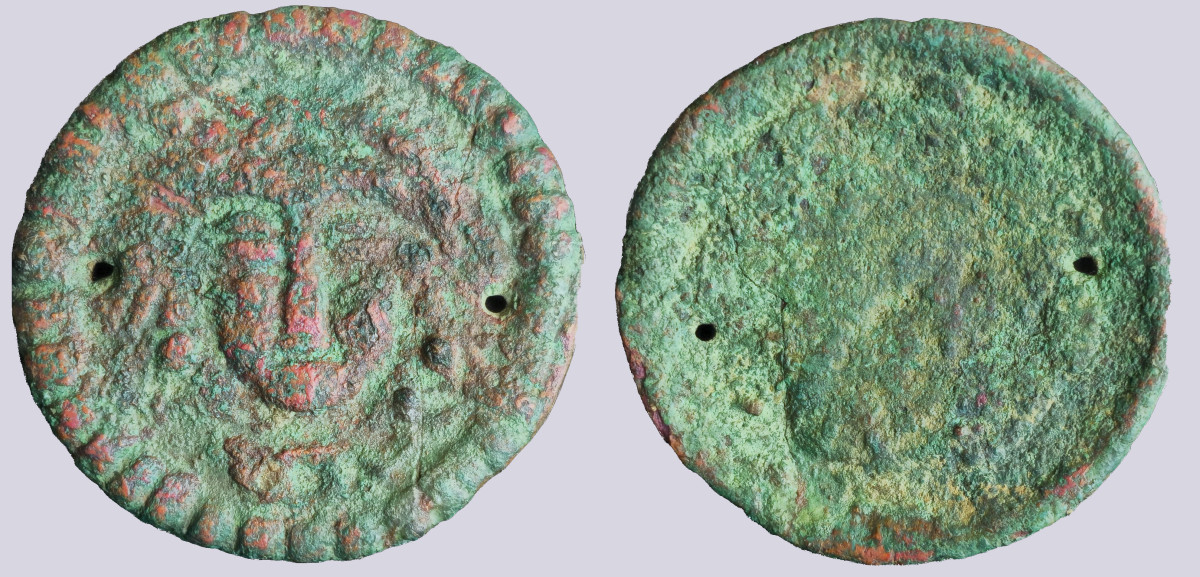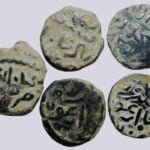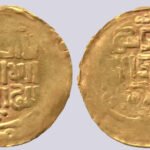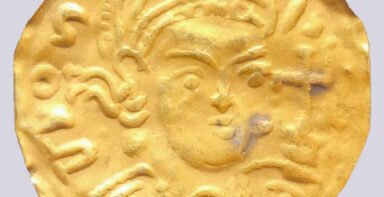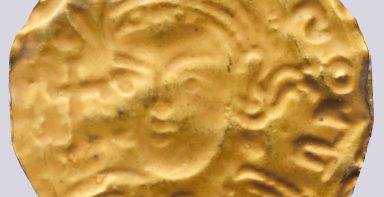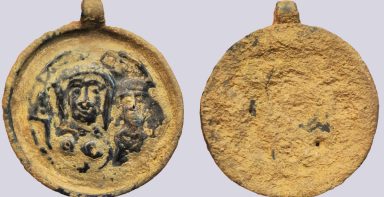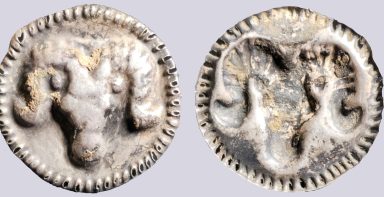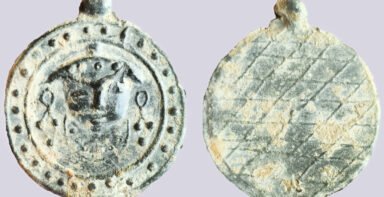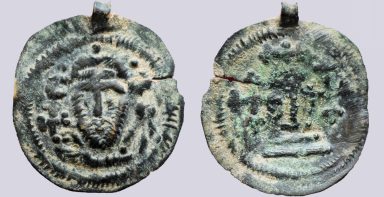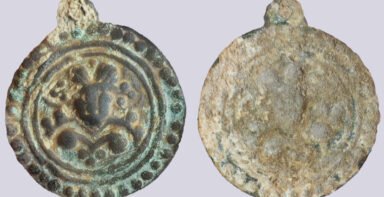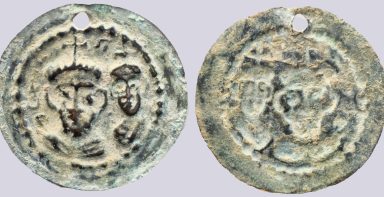Central Asia, Silk Road, AE buckle/bracteate
$199
In stock
0
People watching this product now!
SKU:
2185
Category: Bracteates
Tags: AE bracteate, AE buckle, ancient bronze ornament, ancient jewelry, antiquities, archaeological find, bronze bracteate, bronze buckle, Central Asia, Central Asian artifact, early medieval artifact, horse harness fitting, Hunnic style, nomadic tribes, numismatics, rare antiquity, Silk Road, steppe nomads
Description
Central Asian AE (bronze) bracteate or buckle from the Silk Road region, likely dating to the early medieval period (4th–7th centuries CE). It reflects nomadic, Iranian, and steppe artistic traditions, linked to Hunnic, Hephthalite and Turkic cultures
Obverse (Front) – Anthropomorphic Face:
- Depicts a human-like face, possibly a ruler, deity, or spiritual figure
- Facial Features: Large eyes, a prominent nose, and a curved mouth
- Headdress or Crown: The raised elements around the head suggest a headdress, which is characteristic of Hephthalite and Sogdian coinage
- Symbolism: The depiction may represent a tribal leader, sun deity, or divine protector, a common theme in nomadic steppe cultures
Possible Function & Cultural Significance:
- Buckle or Mount: Given the holes, it was likely sewn or riveted onto leather or fabric as a belt decoration, horse harness fitting, or ceremonial armor ornament
- Bracteate (Pendant or Token): Could have served as an amulet or status marker, similar to the Hephthalite and Turkic tradition of wearing stylized facial motifs
- Silk Road Influence: Reflects a fusion of Iranian-Sogdian, Hunnic, and Chinese influences, typical of objects exchanged along the Silk Road
9.56 g, 33 – 34 mm
Near VF. Thick earthy patina. Unique
References:
Z-185848 (this item)
♦Please, note that our prices are ALL-INCLUSIVE. No additional fees (such as Buyer’s Premium, PayPal commission, etc.) are applicable♦
Related products
Central Asia, Silk Road, AE bracteate of Hunnic style
$499
Central Asia / Silk Road, AV bracteate, imitations of Byzantine style
$999
Central Asia / Silk Road, hunnic AE pendant in Byzantine style
Central Asia, Silk Road, AR bracteate in Hunnic style
Central Asia, Silk Road, PB pendant in Hunnic style
Central Asia / Silk Road, hunnic AE pendant in Byzantine style
Central Asia, Silk Road, AE bracteate of Hunnic style
$99


